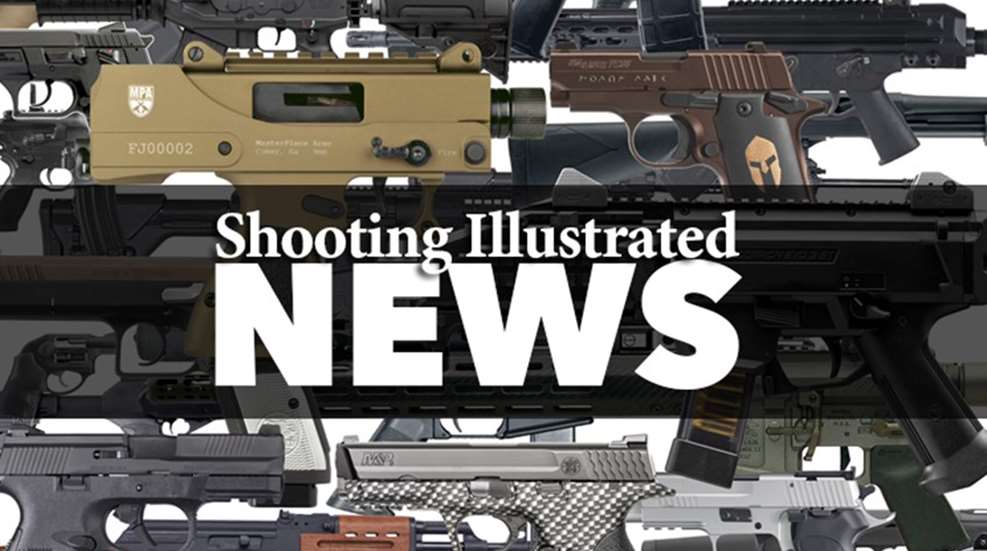
We know our readers work in just about every job imaginable. Indoors, outdoors, sitting at a desk in an office, running a machine in a factory, moving about in a warehouse, laying bricks outdoors, riding a horse on a ranch or a tractor on a farm: you name it, our readers do it. And many of them choose to do it armed. Some of them carry openly, but most carry concealed. The luckiest of these people are those whose activities and mode of dress don't vary during the course of their workday. And the most fortunate of all are those who wear some sort of covering garment, as this obviously widens the field of holsters to choose from.
I am a real proponent of keeping things simple. For most folks, a strong-side, inside- or outside-the-waistband holster worn just in front of or just behind the hip is probably the easiest carry method to learn. Likewise, it's probably the most efficient for drawing and driving the gun to the threat. But without some sort of covering garment, it cannot be employed for concealment purposes. If, however, you wear a suit, sport coat, uniform jacket, smock, lab coat, vest or appropriate-weight sweater, then—disregarding activities for a moment—I cannot recommend a better place to start when looking for a way to carry concealed.
Using any of these garments, however, requires familiarization and practice. If they change from day to day or even just seasonally, you need to make sure you take stock of that change and adapt to any differences it might cause. More problematic are the changes that might occur throughout the workday. If for any reason it becomes necessary or desirable to remove the covering garment (not an unusual action), then all bets are off and this method of carrying or positioning cannot be employed.
Activity can be a problem, too. If you are sitting at a desk all day, or maybe driving a forklift on a dock, a gun carried in this location can be both uncomfortable and hard to produce. I always emphasize the need to look at the big picture. Just because you can successfully conceal and utilize a firearm carried in a particular location doesn't mean it will be comfortable or convenient to do so. If you don't like the way it feels, chances are you won't wear it. And what good will that do?
So, if you don't have the luxury of a covering garment, or if there are other factors creating problems, you need to consider alternate methods of carrying.
Staying on the body, people tend to think of more traditional concepts like ankle holsters and pocket holsters. Both of them are valid options, but there are big-picture concerns here, too. Although pocket holsters can be used in jacket or coat pockets, both they and ankle holsters generally require pants. As such, they aren't necessarily useful for many women. Additionally, pocket holsters can be difficult to draw from while seated. Even though ankle holsters can be readily employed from many positions, many people don't practice enough to do so fluidly while under stress. Yet, with the right clothes and the right training, both methods can be excellent ways to carry small- to medium-size handguns completely undetected and produce them when needed.
Gaining in popularity is a subgroup of inside-the-waistband (IWB) holsters referred to as "tuckable." These models generally feature less obvious pant clips or belt loops than traditional IWB holsters, and they allow the firearm to drop down into the waistline—using the pant or skirt to block a good deal of it from view. However, rather than expose the grip frame to those nearby like most IWB holsters, these models allow the wearer's shirt to either be bloused over or tucked around the grip's butt, concealing it from view. Such holsters can be a good choice, but more than most, they require an obvious balance of clothing, body type and skill in performing the draw in order to be successfully employed.
In an effort to sidestep such clothing and situational matters, many people choose to carry their handguns at work off the body in a briefcase, day planner, purse or fanny pack. All of these options are valid methods, but they require you to have the device with you at all times—there are serious ramifications if you don't. Toting the gun in a briefcase or day planner left behind at your desk while you go off to a meeting, lunch or even the bathroom not only won't help you if you need it, but also makes the weapon susceptible to theft or mishandling by unauthorized parties. When traveling to and from the workplace, a briefcase, purse or fanny pack can become the reason for an incident instead of the means of assisting you in dealing with one. But, as long as these conditions are understood, all of these concepts are viable options when the gun cannot be kept on your body.
None of what I've said here is meant to discourage you from legally carrying concealed. Instead, I hope that by presenting both sides of the story upfront, it will minimize the frustrations that cause many people not to carry after they have gone through the trouble of getting their permit. While none of this information is rocket science, all of it is logic-driven, and by looking at limits as well as your needs, your best-case options will generally be made clear.





































